There is the list of top 10 wonders of the world which are the masterpiece of the skill and handwork of the people of that era. Today we become astonished to see these wonders, that in so remote ages without any modern technology and machine, how so great construction were made.
Here is the list of top 10 wonders of the world.
10. Roman Baths
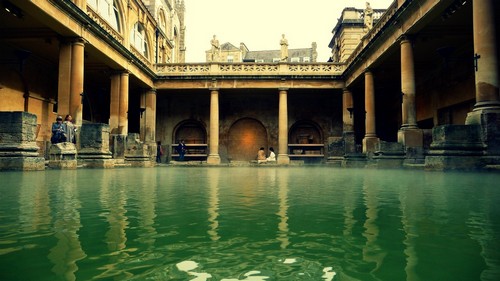
The famous Roman Baths complex is a site of historical interest in Somerset. The house is a well-preserved Roman site for public bathing. It’s a reconstruction of the previously destroyed baths. It was destroyed in the 6th century, reconstruction of the baths occurred over time with the last additions being done in the late 1800s.
The Baths are a major tourist attraction of modern world. They receive more than one million visitors a year. It was featured on the 2005 TV program Seven Natural Wonders as one of the wonders of the West Country. Visitors can see the Baths and Museum but cannot enter the water.
You can also visit the 10 Wonders of the Ancient World.
9. Leaning Tower of Pisa

This tower was build first in Pisa, a city of Italy in August 14, 1173. It is known due to its inclinations towards right side. Till now it is stable and nothing happened to it instead of its tilt.
8. Colosseum
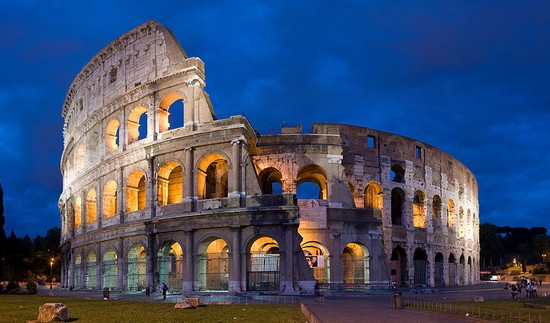
The Colosseum, or the Coliseum, originally the Flavian Amphitheatre is an elliptical amphitheatre in the centre of the city of Rome, Italy. This is one of the greatest architecture ever built in the history of Rome. The Colosseum was originally known as the Flavian Amphitheatre and is the largest amphitheater to have ever been built in the Roman Empire. It is a circular structure that occupies a site east of the Roman Forum. This Amphitheater was built to organize gladiator contests, dramas and games like hunting animals, constructing mock sea battle and the public could also view it in the open, and cheer their favorites. See also; 10 Eye-Popping Gorgeous Roman Theatres.
7. Chichen Itza

It was founded by the Maya civilization in 400 AD and it is located in the north central, north of Yucatan Peninsula now called Mexico. Chichen has a history that is 1500 years old and is located 75 miles from Merida. It is said to have been the main regional point for different ceremonies. During the earlier days & time, it was governed by priests. Chichen means “At the mouth of the well of Itza”. The word Chi stands for ‘mouth’, Chen for ‘well’ and Itza for ‘the Itza tribe’. The main belief is that people were thrown from the top as a sacrifice to make their god happy and the ones who could survive were the ones who were believed to be seers.
6. Hagia Sophia

The masterpiece of construction, Hagia Sophia is a former Christian patriarchal basilica (church), later an imperial mosque, and now a museum in Istanbul, Turkey. Hagia Sophia is currently the second-most visited museum in Turkey, attracting almost 3.3 million visitors annually.
From its initial conversion until the construction of the nearby Sultan Ahmed Mosque (Blue Mosque of Istanbul) in 1616, it was the principal mosque of Istanbul. The Hagia Sophia served as inspiration for many other Ottoman mosques, such as the Blue Mosque, the Şehzade Mosque, the Süleymaniye Mosque, the Rüstem Pasha Mosque and the Kılıç Ali Paşa Mosque
5. Machu Picchu

Machu Picchu is the pre Columbian, Inca empire site that is located almost 8,000 feet above the sea level. The site is located on a mountain ridge above the valley of Urubamba in Peru. The city is also called the “lost city of Incas”. Machu Picchu was built around 1450, at the height of the Inca Empire. It was abandoned just over 100 years later, in 1572, as a belated result of the Spanish Conquest.
Machu Picchu was declared UNESCO World Heritage Site in 1983. In 2007, it was voted one of the New Seven Wonders of the World in a worldwide Internet poll. See also; 10 Most Iconic Places to Photograph in the World.
4. Taj Mahal of Agra
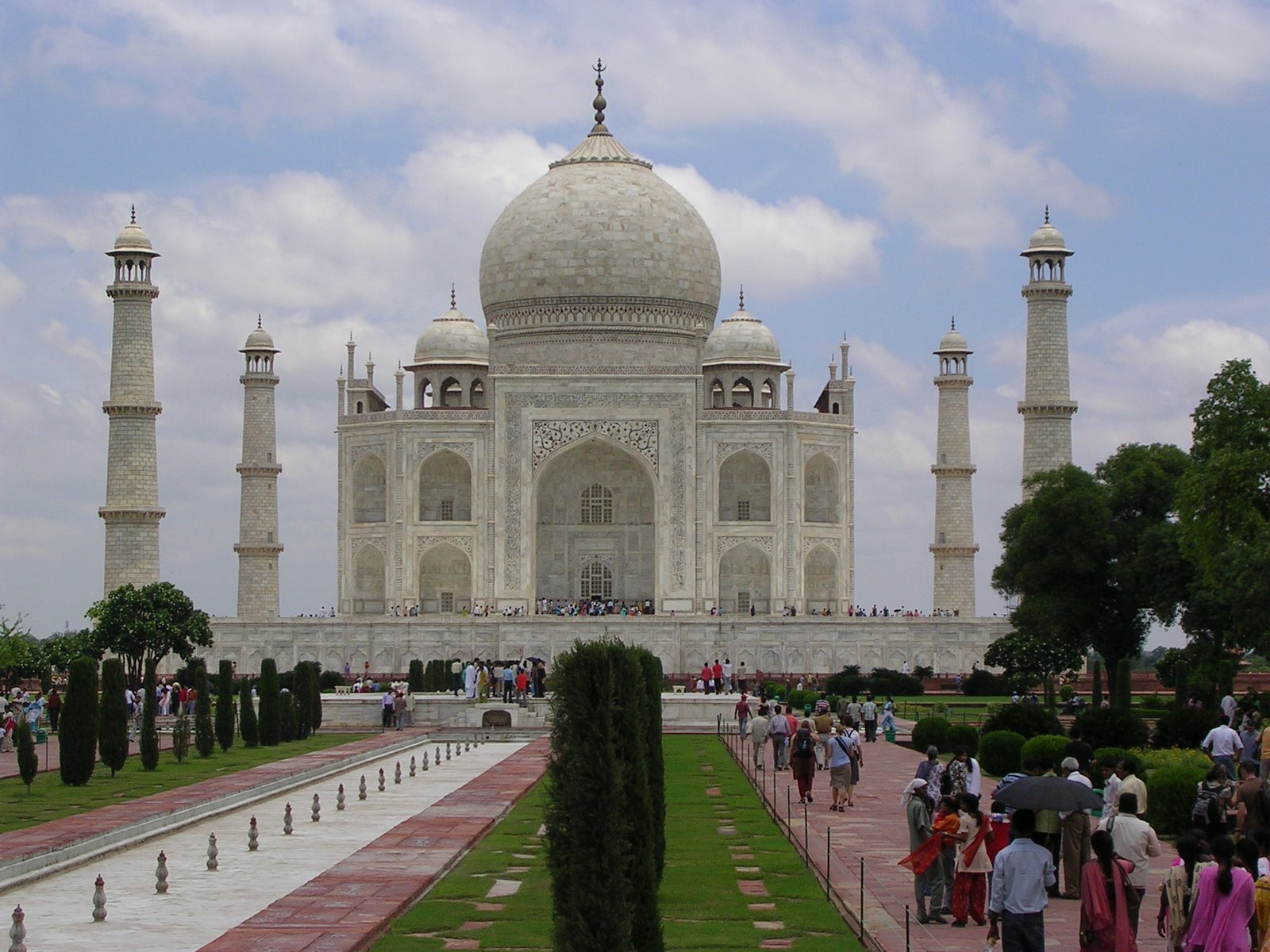
It was constructed by famous Mughal ruler Shah Jahan in memory of his beloved wife Mumtaz Mahal. The Taj Mahal is regarded as the best example of Mughal architecture and is widely recognized as “the jewel of Muslim art in India”. It is one of the world’s most celebrated structures and a symbol of India’s rich history. The Taj Mahal attracts more than 3 million visitors a year. In 2007 it was declared one of the top 10 Wonders of the World. See also; 10 Interesting Facts About Taj Mahal.
3. Cristo Redentor Statue
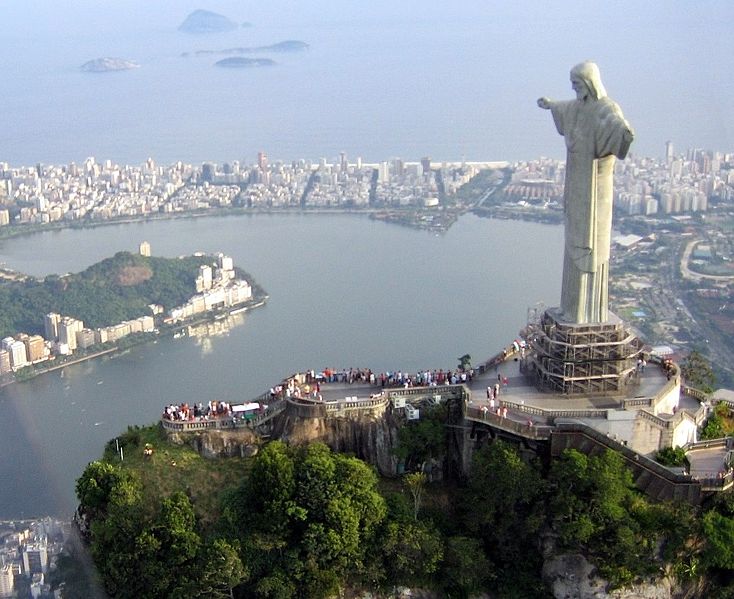
It is largest Art Deco statue in the world and the 5th largest statue of Jesus in the world. A symbol of Christianity across the world, the statue has also become a cultural icon of both Rio de Janeiro and Brazil, and is listed as one of the New Seven Wonders of the World. The statue is 30 metres (98 ft) tall, excluding its 8-meter (26 ft) pedestal. The arms stretch 28 meters (92 ft) wide. It is made of reinforced concrete and soapstone, and was constructed between 1922 and 1931.
2. Petra
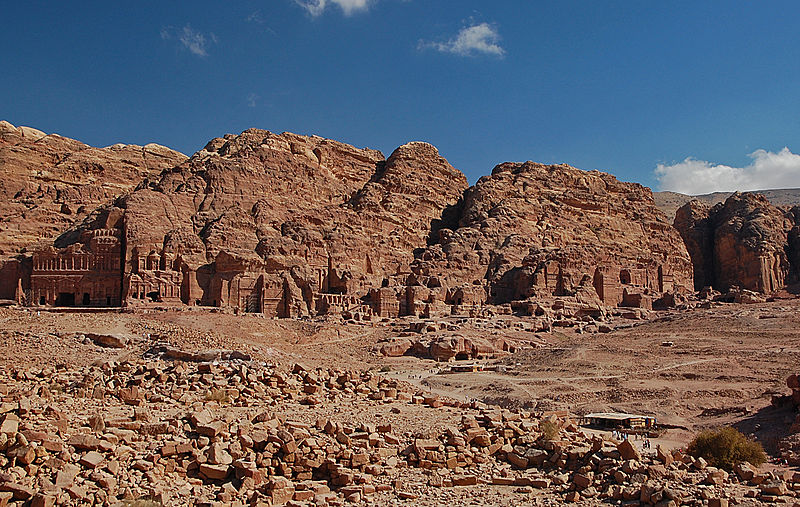
It is an archeological city of Jorden that is famous for its rock-cut architecture and water conduit system. Another name for Petra is the Rose City due to the color of the stone out of which it is carved. Established during 312 BCE as the capital city of the Arab Nabataeans, it is a symbol of Jordan. It lies on the slope of Jebel al-Madhbah in a basin among the mountains which form the eastern flank of Arabah (Wadi Araba), the large valley running from the Dead Sea to the Gulf of Aqaba.
Petra was named amongst the New 7 Wonders of the World in 2007. It is Jordan’s most-visited tourist attraction and one of the “Top 10 Places to See Before You Die”.
1. The Great Wall of China
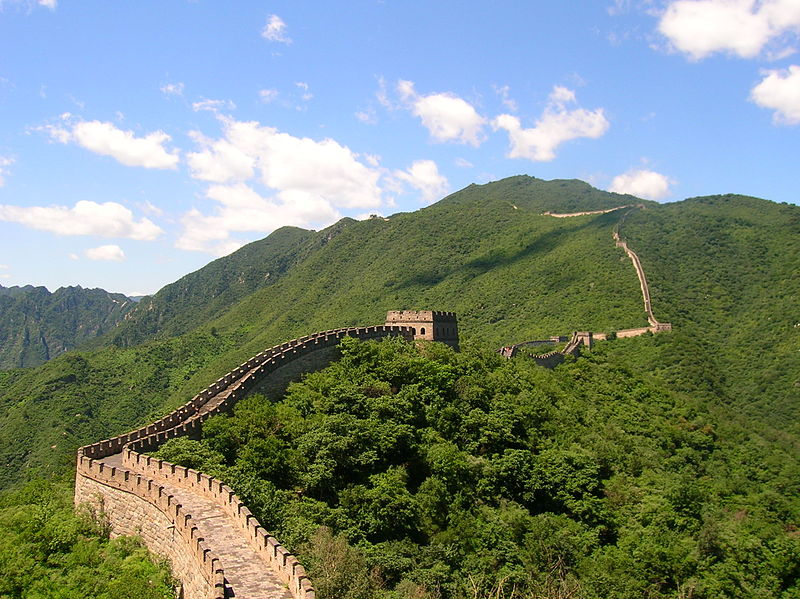
Considered one of the New Seven Wonders of the world, the Great Wall of China was constructed 7th century BC. It is a series of fortification built to protect the Chinese states and empires against the raids and invasions of the various nomadic groups of the Eurasian Steppe. It is globally recognized as one of the most impressive architectural feats in history. According to an archaeological survey, the entire wall with all of its branches measures out to be 21,196 km.
In addition, the Great Wall of China can also be seen from the moon. The earliest known reference to this myth appear in a letter by the English antiquary William Stukeley, written in 1754. Stukeley wrote that;
This mighty wall of four score miles [130 km] in length is only exceeded by the Chinese Wall, which makes a considerable figure upon the terrestrial globe, and may be discerned at the Moon.
Source: The Family Memoirs of the Rev. William Stukeley (1887) Vol. 3, p. 142. (1754).
In 1895, an English journalist Henry Norman also mentioned this claim. He states;
besides its age it enjoys the reputation of being the only work of human hands on the globe visible from the Moon.
Source: Norman, Henry, The Peoples and Politics of the Far East, p. 215. (1819)
“Valley of Love” – The Lost Wonder of the World.

Lost Wonders of the World, The “Valley of Love” was built by a mystery race that inhabited what is now a remote part of Ireland.
This ancient valley is one of the lost wonders of the earth. Valley of love is a mile wide and high. Many controversies revolves around it. It is believed that the valley remained hidden from the eyes of world for many centuries and was built by a mysterious race that now lives in a remote area of Ireland. This valley is more than 3000 years older than the pyramids of Egypt. The only intact structure in this valley referred as ‘Memorial of joy’ is awe-inspiring. This fantastic stone structure has an equally flabbergasted interior which is fully functional to this day.
The classic seven Wonders of the Ancient World were:
- Hanging Gardens of Babylon
- Great Pyramid of Giza
- Colossus of Rhodes
- Statue of Zeus at Olympia
- Temple of Artemis at Ephesus
- Mausoleum at Halicarnassus
- Lighthouse of Alexandria


0 Comments